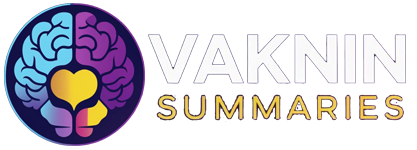1. Concept of Narcissistic Abuse and Idealization Phase
- The term “narcissistic abuse” was coined in the 1980s, initially considering terms like ambient or atmospheric abuse, indicating an all-pervasive, diffuse abuse not traceable to a single event [00:00].
- The idealization phase involves love bombing that creates unrealistic expectations of the victim, which are designed for inevitable failure and subsequent disappointment of the narcissist [00:25].
- Failure in meeting these expectations is crucial as it transitions the relationship to the devaluation and discard phases, which seem abrupt but are structurally planned [03:30].
- The narcissist idealizes the victim to bolster their own self-esteem, using the victim as a trophy or symbol, meaning the victim’s failure also challenges the narcissist’s self-idealization [05:00].
2. Narcissistic Shared Fantasy and Environmental Impact
- The narcissist creates an alternative, dystopian, and totalizing environment—a “shared fantasy”—that is surreal and divorced from reality, similar to other total environments like prisons or hospitals [06:30].
- Victims are trapped in this “alien,” “uncanny,” and psychologically suffocating environment, leading to significant psychological distress [07:15].
3. Introduction of the Concept “Solstalgia”
- “Solstalgia” is a neologism coined in 2003 to describe distress caused by adverse environmental change, combining solace and pain [07:30].
- The concept relates to experiencing environments that are suddenly unfamiliar, resulting in anxiety and disorientation comparable to Freud’s concept of the “uncanny” [08:10].
- Unlike nostalgia, solstalgia can be relieved by returning to a familiar, stable environment [09:10].
4. Solstalgia in Relation to Narcissistic Abuse
- The narcissistic shared fantasy causes solstalgia by isolating victims from their familiar social support and physical surroundings, creating a nightmarish psychological environment [09:40].
- Solstalgia manifests as stress, anxiety, learned helplessness, and loss of agency in the victim, mirroring symptoms seen in complex trauma [10:30].
5. Research on Solstalgia and Mental Health
- A scoping review of 19 studies involving 5,000 participants found positive correlations between solstalgia and mental health issues such as depression, anxiety, PTSD, and somatization [11:40].
- Ongoing environmental changes, especially man-made ones, correlate more strongly to solstalgia than single events, which parallels the ongoing nature of abuse in narcissistic relationships [13:10].
- Emotional distress from these changes parallels interpersonal trauma effects, suggesting solstalgia’s relevance beyond climate change contexts [14:15].
6. Vulnerability and Measurement of Solstalgia
- Certain populations are more vulnerable to solstalgia-related distress, including those strongly connected to their environment, women, and young adults [15:10].
- Several validated scales exist to measure solstalgia and environmental distress, which could be adapted to assess victims of narcissistic abuse [15:50].
7. Therapeutic Potential and Application of Solstalgia Concept
- Solstalgia, though not a formal diagnosis, is useful for understanding emotional responses to environmental and psychosocial changes, including narcissistic abuse environments [16:20].
- It contrasts with nostalgia in that relief can be achieved by changing or restoring familiar environments, emphasizing the importance of social connections and activism [17:35].
- The concept opens avenues for new treatment strategies for narcissistic abuse victims by facilitating their return to a familiar and safe reality [19:55].
8. Final Reflections
- The narcissistic environment acts as a self-contained “paracosm” that disorients the victim, causing anxiety, distress, grief, and rage [18:40].
- Applying solstalgia to narcissistic abuse provides a comprehensive framework to understand and mitigate victim distress by helping victims transition from the “uncanny” narcissistic world back to “homely” reality [20:30].
Note: The timestamps reference key moments approximated from the transcript flow for efficient location and verification.






